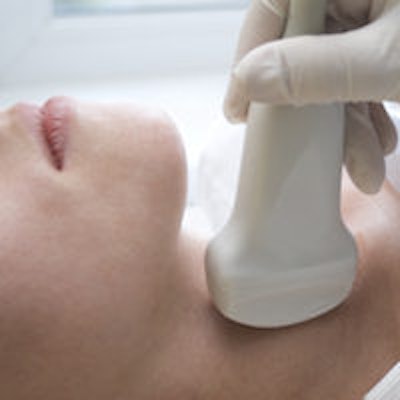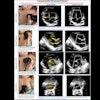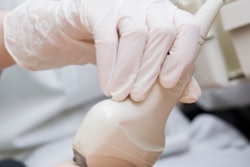
Point-of-care ultrasound is a valuable tool for pediatric emergency medicine physicians evaluating soft-tissue masses in the neck, outperforming clinical assessment, according to a pilot study from Maimonides Medical Center in New York City.
In a prospective study involving 44 patients, researchers from Maimonides' department of emergency medicine found that point-of-care ultrasound had much higher concordance with imaging performed in the radiology department, compared with clinical assessment by pediatric emergency medicine physicians.
"[Point-of-care ultrasound] is an accurate diagnostic tool, and we know that this can help in medical decision-making," said Dr. Marla Levine, who presented the findings during a session at the recent American Institute of Ultrasound in Medicine (AIUM) annual conference.
Point-of-care ultrasound's role?
A common complaint in pediatric emergency care, soft-tissue neck masses can usually be readily diagnosed by pediatric emergency medicine physicians without additional studies, Levine said.
"However, in certain situations the diagnosis is unclear, at which point we will usually obtain lab evaluation and some form of radiology department imaging," she said.
To determine the role of point-of-care ultrasound in evaluating pediatric patients with soft-tissue neck masses, the Maimonides researchers compared the performance of both clinical assessment and point-of-care ultrasound with findings from radiology department imaging.
The pilot study was conducted at the institution's pediatric emergency department, which has 37,000 patient visits a year. Subjects were enrolled between February 2012 and February 2014; 11 pediatric emergency medicine physicians participated, of whom two were fellowship-trained in emergency ultrasound.
The study used a convenience sample of pediatric patients (younger than 18 years) with a chief complaint of a neck mass. After a child presented with a neck mass, the managing pediatric emergency medicine physician took the patient's history and performed a physical exam. This physician then decided on a plan of care, including whether to obtain any radiology department imaging, Levine said.
Next, point-of-care ultrasound was performed, and these findings were compared with results from imaging in the radiology department, if available. If radiology department imaging was not obtained, patients were followed up over the phone within seven to 10 days.
The patients enrolled in the study had a median age of 5.3 years, and 65.4% were male. Fever was found in 69.2% of patients, and 57.7% were admitted to the hospital.
The point-of-care ultrasound protocol included scans in both the axial and sagittal planes. Investigators noted if there was a single lymph node versus a conglomeration of nodes and whether there was central hilar flow. They also noted whether there was normal lymph-node architecture or if it looked to be more consistent with an abscess or congenital cyst, or if the mass was indeterminate on ultrasound, Levine said.
Of the 44 patients who enrolled and received point-of-care ultrasound, 26 went on to receive radiology department imaging and were included in the final statistical analysis. The radiological impression was lymphadenopathy in 14 patients (53.8%), abscess in 10 patients (38.6%), a soft-tissue mass in one patient (3.8%), and a thyroglossal duct cyst in one patient (3.8%).
Better agreement with radiology imaging
Agreement with radiology department imaging was as follows:
- Point-of-care ultrasound: 80.8%
- Pediatric emergency medicine provider assessment: 53.8%
"Point-of-care ultrasound is more accurate than [pediatric emergency medicine] provider clinical assessment in the evaluation of pediatric soft-tissue neck masses," Levine concluded.
She acknowledged a number of limitations of the pilot study, including its use of a small convenience sample.
"In order to generalize this data to the greater [pediatric emergency medicine] community, we would need a larger-scale study," she said.




















